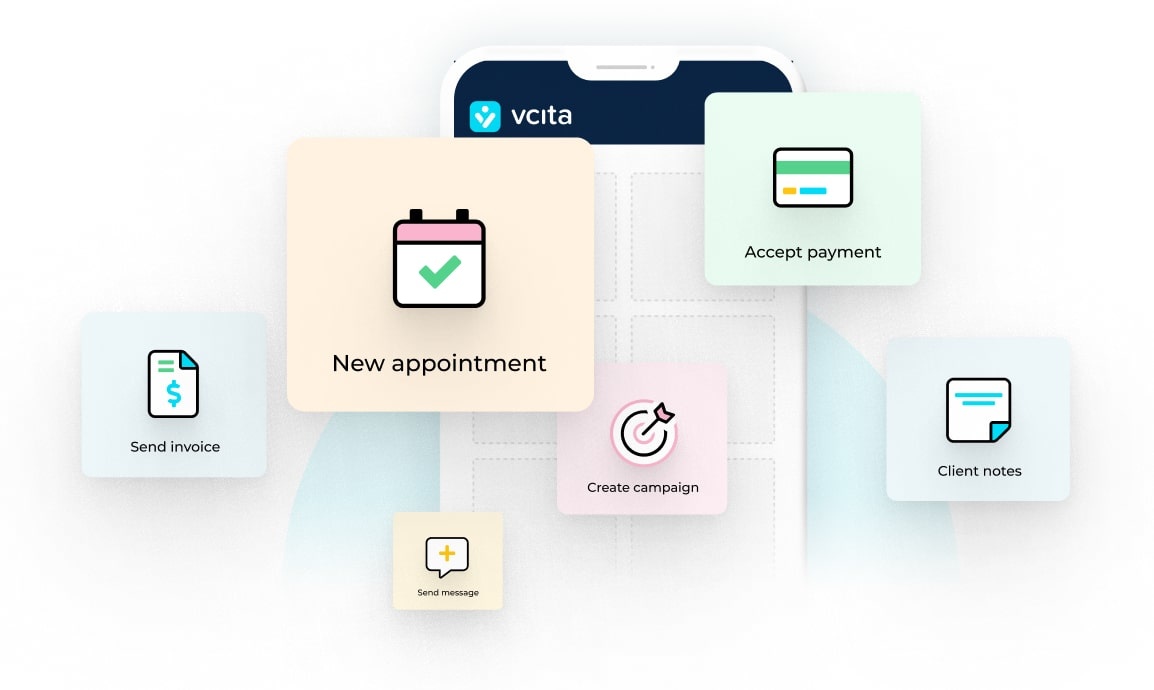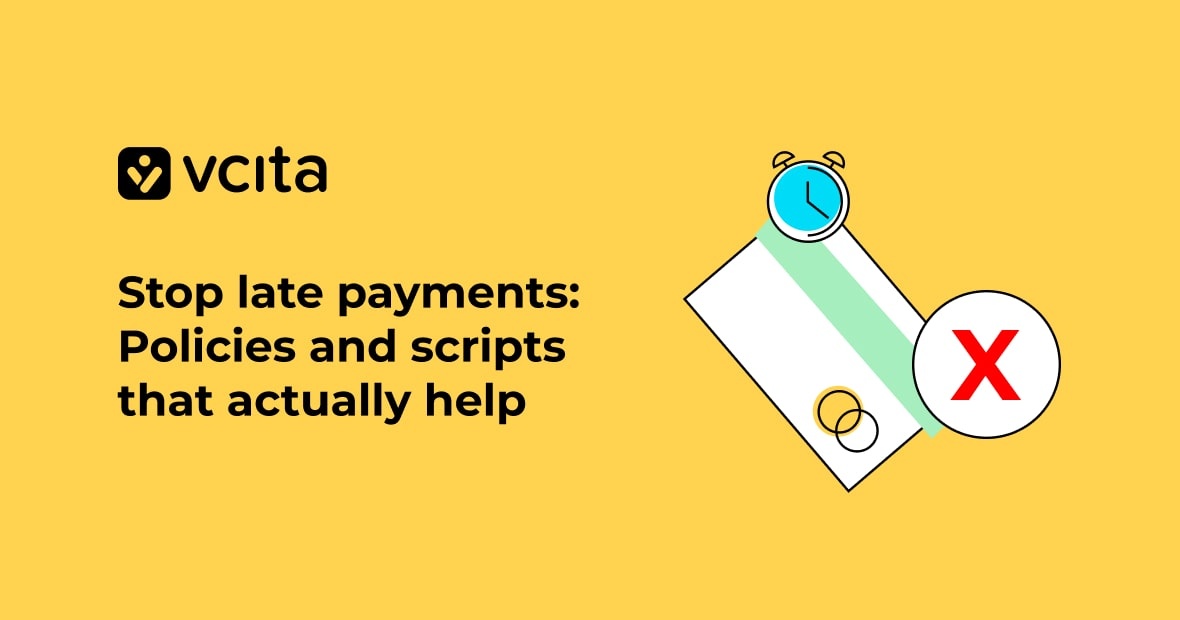Effectively managing refunds and credits is essential for small service-based businesses. The right techniques help you maintain client trust, streamline operations, and safeguard cash flow. Learn the best strategies here.
TL;DR
Properly managing refunds and credits protects your business reputation, improves customer satisfaction, and optimizes cash flow. Utilize automated CRM solutions like vcita to streamline processes and ensure accuracy.
Key takeaways
- Clearly defined refund and credit policies improve customer trust.
- Automated systems reduce errors and save administrative time.
- Efficient tracking ensures accurate financial management.
- Personalized client communication minimizes dissatisfaction.
Why managing refunds and credits matters for your business
Refunds and credits can pose significant challenges for small businesses, particularly those providing services. Clients occasionally request refunds because they are dissatisfied or due to service cancellations, and you might issue credits as goodwill gestures or service adjustments. Mismanaging these issues can lead to client frustration, financial inaccuracies, and administrative overload.
Proactively implementing robust refund and credit policies can mitigate these challenges. Utilizing effective business management tools like vcita can simplify this process, enhancing operational efficiency and customer satisfaction.
Common pain points in managing refunds and credits
Financial management issues
Refunds and credits can complicate your bookkeeping, creating discrepancies between sales data and actual revenue. Manual tracking often results in errors, leading to financial confusion. Additionally, inconsistent tracking practices can lead to problems during audits or tax season.
Time-consuming administrative tasks
Manually processing refunds, updating ledgers, and notifying clients consumes considerable time, diverting resources from other vital business activities. As your business grows, the process takes up even more time, sometimes reaching the point where you need dedicated staff to handle these tasks.
Customer satisfaction challenges
Clients expect transparency and prompt responses. Mishandled refunds can damage customer relationships, decrease repeat business, and result in negative online reviews. Poor refund handling can escalate complaints, leading to time-consuming customer service interactions.
Establishing clear refund and credit policies
How to create a refund policy that works
A clear refund policy sets expectations upfront and reduces misunderstandings. Your refund policy should cover the following points:
- Conditions for refunds
- Timeline for issuing refunds
- Method of refund (original payment, store credit, etc.)
- Exceptions to the policy
- Steps customers must follow to request refunds
Make your policy accessible by displaying it clearly on your website, invoices, and receipts. When you apply your policy consistently, you’ll enhance customer trust and reduce disputes.
When to issue credits instead of refunds
Credits are useful for maintaining customer relationships and encouraging repeat business. Consider issuing credits in these situations:
- Service delivery delays
- Minor customer dissatisfaction
- Promotional incentives
- Loyal customer appreciation
- Service upgrades
Clearly document issued credits, including expiration dates and conditions, to avoid future confusion.
Streamlining refunds and credits with automation
Automating refunds and credits significantly reduces human error, saves time, and enhances accuracy. CRM platforms like vcita offer streamlined features specifically tailored to address these needs.
The benefits of automation
- Quick processing
- Real-time updates
- Accurate financial tracking
- Reduced administrative workload
- Enhanced client experience
How vcita helps
vcita’s integrated CRM platform supports seamless refund and credit management through:
- Automated invoicing: Quickly generate refunds and credits directly linked to the original invoice.
- Client management: Track all refund and credit transactions in individual client cards for quick reference.
- Financial insights: Easily view the financial impact of refunds and credits through intuitive reporting dashboards.
- Reminder and notification systems: Automatically send reminders and notifications related to refund or credit processing.
Improving customer communication around refunds and credits
Transparent and timely communication significantly reduces client frustration. Use personalized messaging to clearly inform clients about the status and details of refunds or credits.
Crafting effective communication
- Clearly state the refund amount or credit value.
- Specify processing timelines.
- Provide direct contact information for further queries.
- Offer explanations and apologies, when appropriate, to foster goodwill.
vcita simplifies communication with integrated messaging features, enabling businesses to automate and personalize client notifications.
Monitoring refund and credit trends
Analyzing refund and credit patterns helps identify underlying service issues or market trends impacting client satisfaction.
Using data to reduce refund requests
Regularly review refund data to detect trends like:
- Frequent service complaints
- Common refund request periods
- Client demographics associated with higher refunds
- Seasonal variations in refund requests
vcita’s reporting features provide valuable insights into these trends, empowering proactive management that helps you enhance overall service quality.
Handling special situations
Certain refund scenarios require specialized handling to maintain customer relationships and financial accuracy.
Managing refunds due to service interruptions
Service interruptions, whether due to emergencies, technical failures, or external circumstances, necessitate clear and proactive refund policies. Inform clients promptly, explain the situation clearly, and outline the resolution steps, including refund or credit options.
Addressing fraudulent refund requests
Implement verification processes to authenticate refund requests, reducing potential losses due to fraud. Clearly document each step to protect your business and provide evidence in disputes.
Turning challenges into opportunities
Managing refunds and credits effectively isn’t only about minimizing financial losses; it’s about transforming challenging situations into opportunities to reinforce trust and demonstrate exceptional customer care. Clearly defined policies, automated systems, and transparent communication foster customer satisfaction and business efficiency. Integrating a comprehensive CRM solution like vcita simplifies these processes, allowing your business to stay organized, financially accurate, and customer-focused.
FAQs
How long should a refund take?
Standard practice is 5–10 business days. Clearly state timelines in your refund policy and adhere to it strictly to avoid disputes. Regularly audit your refund timelines to ensure compliance.
What information should be included in refund notifications?
Include refund amount, processing date, original payment method, and your contact information for follow-up queries. Clearly state reasons for the refund to avoid misunderstandings.
Can I legally offer credits instead of refunds?
Yes, provided your refund policy clearly states this option and clients agree beforehand. Transparency is key. Legal compliance varies by jurisdiction, so ensure your policy meets local regulations.
How can I reduce refund requests?
Improve service quality, set clear expectations, and maintain open communication channels. Offer alternative resolutions like credits or service adjustments. Regularly solicit client feedback to proactively address potential dissatisfaction.




























